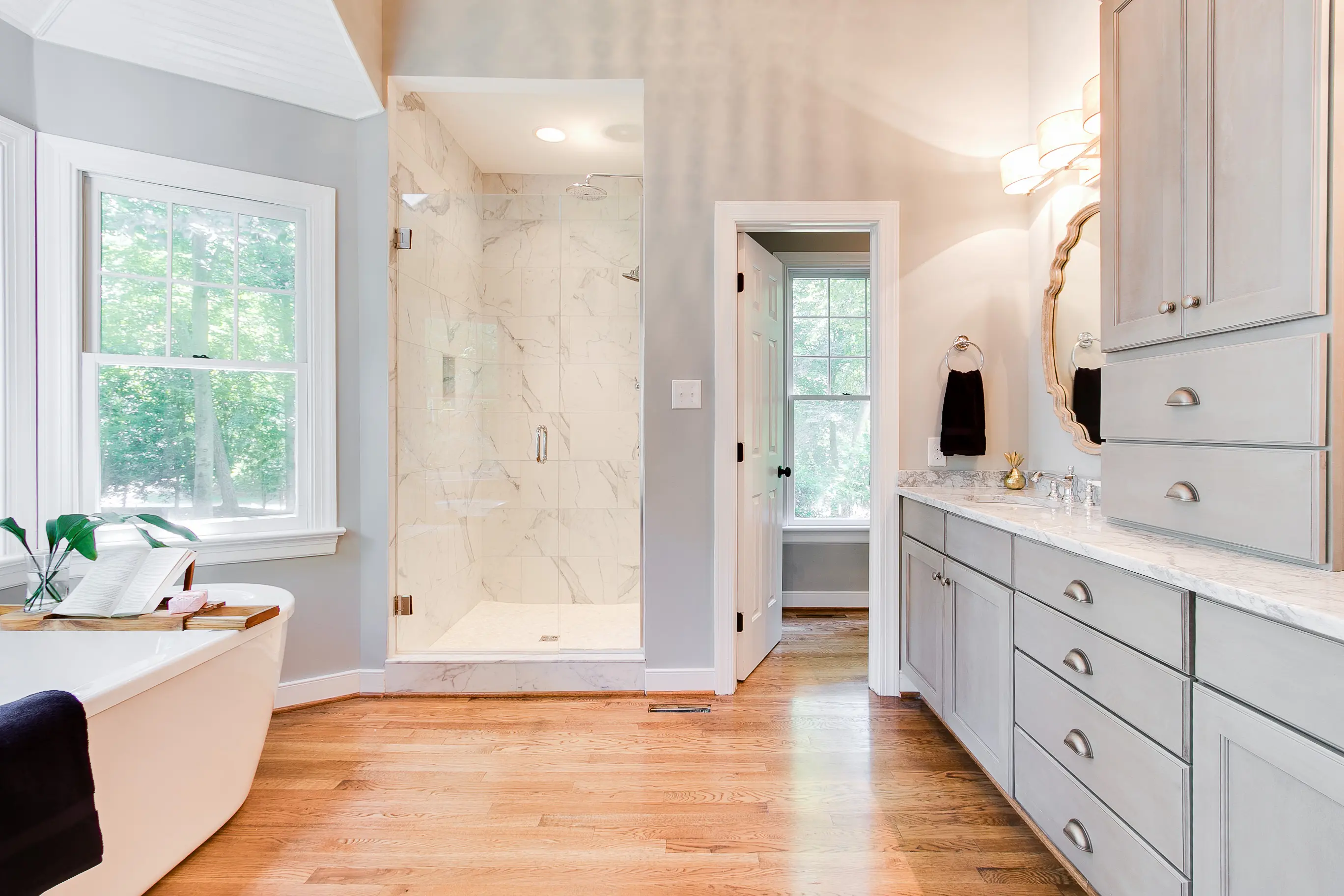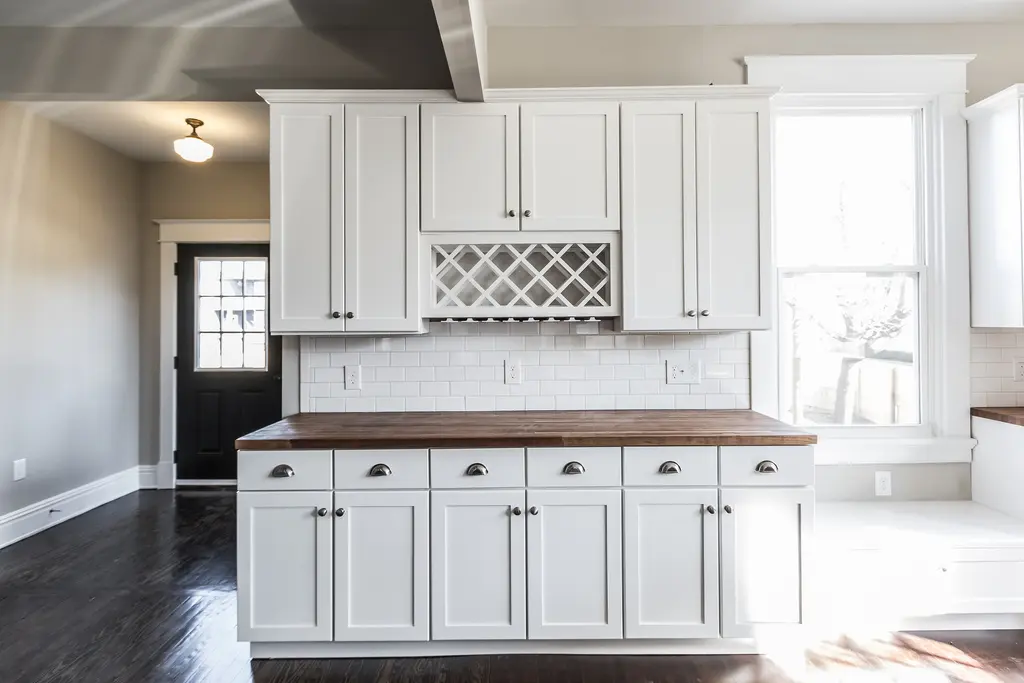So you want to buy a renovated bungalow or four-square in the city, huh? I think deep down, we all do.
It always begins innocently enough. You see a picture on Pinterest of a 1930’s era bungalow with the original trim, refinished floors, and reclaimed mantle over the ornate brick fireplace — and you fall in love. The idea of owning an old, but renovated, home in one of Richmond’s established neighborhoods feeds the soul so much more than the idea of a vinyl clad box on a cul-de-sac near the mall.
You can easily picture yourself being a few blocks away from the local farmer’s market, your favorite restaurant, and maybe the James River Park system — so you start scouring your favorite neighborhoods on the weekends, driving every street and talking to the neighbors out walking or tending to their yards.
And then one day, you see a run down house with great bones that now has a dumpster outside. You call the name on the sign and suddenly, it starts to get real …


What is a Flip?
Great question — Is a ‘flip’ a renovation, a ‘gut rehab,’ a cosmetic improvement, or something else? The answer is ‘it depends.’
While the buying public, the agent community, and the Commonwealth of Virginia all agree on what a new home is, whether or not a flipped home is closer to a cosmetic renovation or a gut rehabilitation really depends on both the condition of the house when it was acquired and the skills of the contractor.
The questions abound — Is a flip considered ‘new’? What exactly is warranted? Was it built to code? What specifically was done? New fixtures or all new plumbing? New wiring? If not, what is new and what is original? Is the owner a contractor or did they hire one?
Legal Considerations
In the eyes of the law, the flipped home is not considered a ‘new’ home. New homes, by law, are treated differently than resale (or ‘used’) homes and the Virginia law mandates certain warranties are provided by the builder on the structure of the home. In addition to the structural warranty provided by the builder, most new homes come with manufacturer’s warranties of various lengths on many of the materials and mechanical systems.
However, in a flipped home, whether cosmetically improved or fully renovated, no warranties are mandated by the state. While building permits and the correct licensure are required, no warranty automatically comes with the purchase, unless otherwise offered by the seller doing the renovation.
So just know that caveat emptor (buyer beware) applies. Don’t assume that because parts of the home are new, that the entire home comes with a warranty.
The Cost ‘Rules of Thumb’ for Flipping
Probably the best way to understand what type of Flip you are buying is understand the costs associated with renovation.
No one renovator of property has a secret method. Materials, labor, appliances — they all cost each contractor roughly the same amount of money. And while one renovator might have a slightly lower cost structure due to volume, the differences are somewhat minimal. No renovator can do $50,000 worth of work for $25,000.
Below is a rough guide to the costs associated with each type of renovation:
- For $10 to $15/SF, a flipper can really only afford to do cosmetic repairs. Paint, flooring, fixtures, some sheetrock repairs, and maybe a somewhat pedestrian kitchen installation can typically be accomplished. But adding, removing or relocating walls, or upgrading plumbing and electrical are unlikely to occur.
- For about $25 to $40/SF, you might see all of the above, with a better kitchen and some bath work, maybe a new roof and perhaps some mechanical work. $30/SF might allow for a wall might be opened up or some other minor floor plan adjustments, but $50/SF is not enough to completely rebuild the home.
- For about $50 to $60/SF, you are able to modify floor plans fairly substantially, and/or do some work the antiquated electrical and plumbing systems. New roof, new mechanicals, and a new exterior is likely, too.
- For about $70 to $100/SF, you should see a thorough, if not spectacular, complete renovation of the entire home, including new systems and all new wiring/plumbing. The $80 to 100/SF budget is basically the cost for building a new home with granite, tile, wood floors, 30+ year roof, multiple zone mechanicals, garage and porch.
- For about $120 to $150/SF, you should be getting “spectacular” PLUS some outdoor features like fire pit, outdoor grill, and other hardscape.
- For about $150 to $200/SF, and you are talking about extremely upscale historic renovation and/or additions with custom made replications of the original features, high-end appliances and other luxury fixtures.
Why is it important to know these numbers? Because if you can see what the person paid for the home (and typically you can via online public records) then you will be able to back into the numbers and see how much margin there was for renovation.
So as an example — if a flipper tells you they have done a ‘down-to-the-studs’ type of renovation, then know that you would need to see a home purchased at a steep discount. If a 2,000 SF home was purchased for $175,000 and is now priced at $300,000, I would seriously doubt that the home was taken down to the studs before being rebuilt.
The Takeaway
Spend a lot of time understanding what you are buying.
Your definition of ‘flip,’ your agent’s definition, the ‘flipper’s’ definition, and the law’s definition can all differ. Do your homework, ask a lot of questions, get everything in writing, check references, and above all else, do NOT waive inspections!
Buying a home that has been “flipped”, ”rehabbed” or ”renovated” can be a great decision, provided everyone is on board with what it is that is being purchased.
(Want to read more? Check out our article In Defense of Flipping.)






